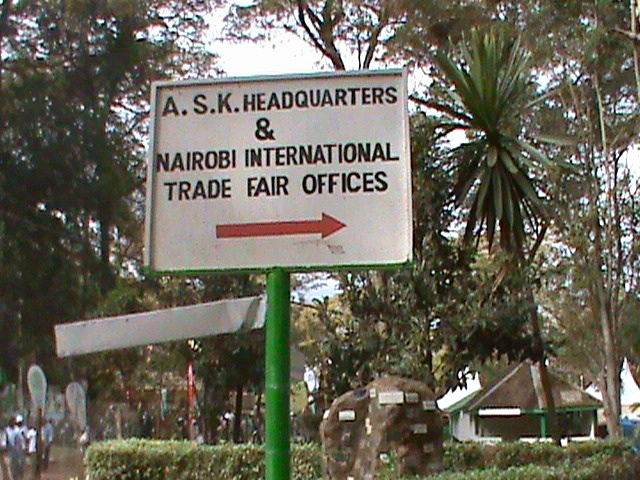Left High and Dry
 This past week, I attended the annual Nairobi International Trade Fair, which is sponsored by the Agricultural Society of Kenya. Similar to a 4-H County Fair in the United States, which features children’s activities alongside agricultural displays, the fair’s marketed purpose is to educate the public on programs, companies, and organizations that work with Kenya’s agricultural and environmental sectors.
Despite these good intentions, the Nairobi International Trade Fair has a hidden underbelly, which tells an entirely different story: exploitation of the water and electricity supply of nearby slums.
This past week, I attended the annual Nairobi International Trade Fair, which is sponsored by the Agricultural Society of Kenya. Similar to a 4-H County Fair in the United States, which features children’s activities alongside agricultural displays, the fair’s marketed purpose is to educate the public on programs, companies, and organizations that work with Kenya’s agricultural and environmental sectors.
Despite these good intentions, the Nairobi International Trade Fair has a hidden underbelly, which tells an entirely different story: exploitation of the water and electricity supply of nearby slums.
The fair is nestled between Kibera to the east and Jamhuri to the west, which are considered some of the world’s worst urban slums. These blighted neighborhoods also unwillingly provide much of the energy and water supply the fair requires to run every year. In Kibera, wires are illegally rerouted, and water is pumped from the town through shoddy plastic pipes that often run through sewage ditches. While these resources are more easily acquired from Kibera, the supply is considered too unreliable to sustain the fair. To fill the gap, water and electricity is also taken from residents’ homes in Jamhuri to power the fair. According to Connie, a resident of Jamhuri for the past decade, “Every year they take our water and electricity. A few years ago it was very bad, I would not have power for almost a month."
Not only does the fair take electricity and water from local residents, it flagrantly wastes these precious resources. Walking through the fair grounds, I see “Clean Water” trucks spill water onto the streets in order to contain dust. On top of that, the building housing the Kenyan Agricultural Research Institute at the fair springs a leak while I was there, resulting in marshy, sunken ground.
This all fails to faze fair attendants, as they simply walk over the spilled water to listen to President Kibaki’s speech, marking the official opening of the fair. In the address, Kibaki announces a financial expedition for the Fertilizer and Seeds Fund, whose aim is to increase agricultural production and provide better food security through the long-term availability of affordable seeds and fertilizers for farmers—a particularly salient topic during a time of great drought throughout Kenya.
At the sports stadium in the center of the fair, actors dressed as Kenyan soldiers and in a mélange of goodwill-donated Halloween costumes perform in the middle of the field. Despite the general confusion as to what kind of reenactment it is, the setting off of explosives draws huge crowds. The fair-goers love it—people cheer as they crowd the stadium seating. After the last fire goes off, the Kenyan military band marches through the smoke triumphantly.
At the end of the day, local residents are happy that the fair is over; the crowds are gone, the horrendous traffic lightens to its typically bad state, and electricity and water shortages won’t be a worry until next year. While the residents of Kibera and Jamhuri consider their past-week experience to be merely an annual nuisance, most fail to realize that the fair is a microcosmic example of the state of politics in Kenya—confused pageantry and politics distracting attention from the country’s marginalized population and the pertinent issues not on the government’s agenda.




